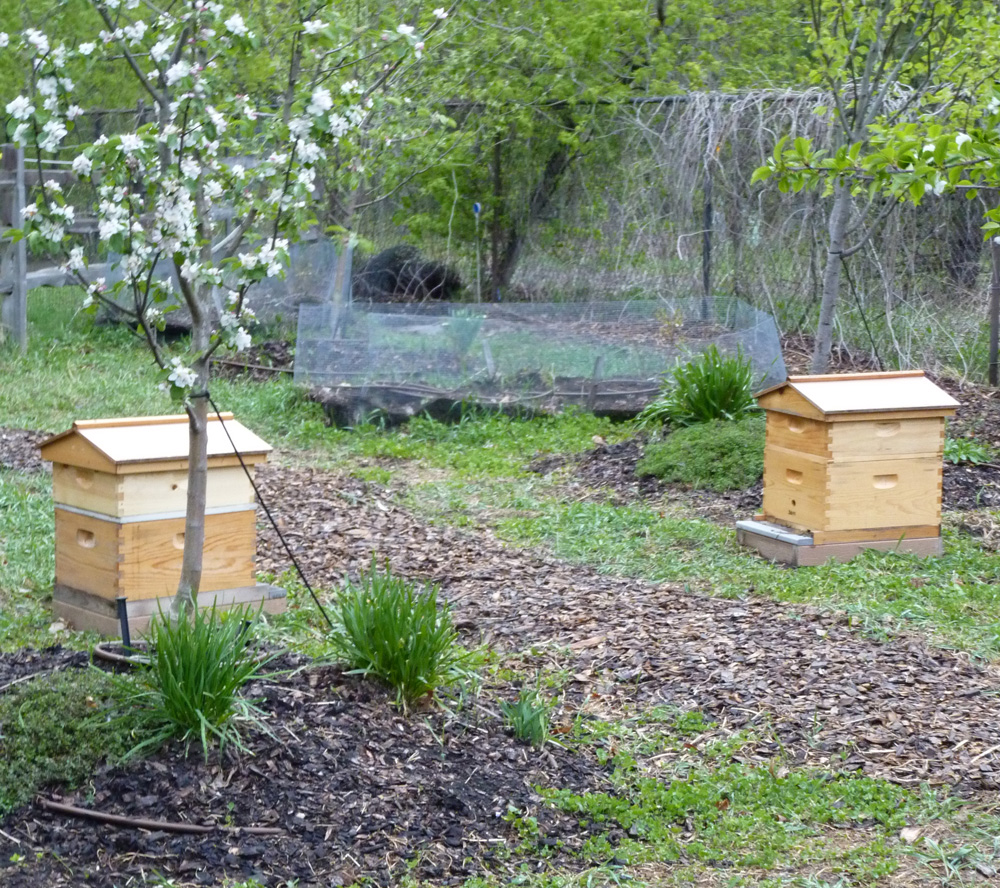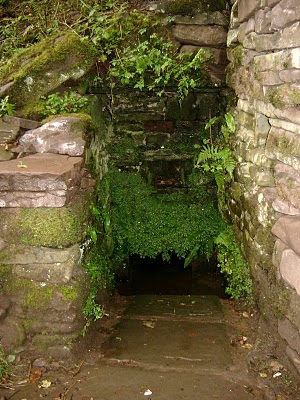Winter and the Moon of the New Year
Christmastide, day 7: New Year’s Day
Friday gratefuls: Sherlock Holmes. Cribbage. Ribeye and lobster. Mashed potatoes. Deli salad. Tony’s. Cold. Snow. Low wildfire risk. Rigel between us, sharing her head. Kate’s pillow. Mine. Kep at his spot. 19 days til 1/20 at 9 am. See the back of his head. Tom’s mother, Evelyn. Tom. His sister.
 Andover, 2012, Bees and Apple Blossoms
Andover, 2012, Bees and Apple Blossoms
Paul, here’s an English New Year’s ritual for you. Wassail. You may have heard the word used in relation to wild parties. That’s good too of course. But. In England folks go out to the oldest apple tree in their orchard, usually around noon, and pour cider from a bowl around this tree.
In Devon and Cornwall they add bowing three times to the “Apple-Tree Man.” I like this. The idea is to encourage a large and healthy crop for the fruit season. Pieces of cake and toasted bread were hung from the branches. This was called wassailing the tree. Wassail comes from wase haile, or good health.
They sing:
Here’s to thee, old apple tree
Whence thou may’st bud and
Whence thou may’st blow.
And whence thou may’st
Bear apples anew.
Hats full, Caps full, Bushel,
Bushel sacks full.
And my pockets full too?
Huzzah
Or.
Blow, bear well,
Spring well in April,
Every sprig and every spray
Beat a bushel of apples against
Next New Year’s Day.
Matthews, 193 for both

Another New Year’s custom from the Faery Faith involves dressing the wells. In the ancient Celtic way artesian springs were considered dwelling places for faery folk and pathways to the Otherworld. Like some Native American nations, prayer rags tied to trees and shrubs near the well were common. Also, bouquets of flowers, small candles.
In 1995 I visited St. Winifride’s Holy Well in Holywell, Flintshire, Wales. Called by some Catholics the Lourdes of Wales, her well has a stone well casing about three feet high and a large pool which the well fills. When I was there, wheelchairs and crutches lined one of the walls.
St. Winifride’s Holy Well is one of the few locales mentioned in Sir Gawain and the Green Knight. Sir Gawain goes there on his journey to find the Green Chapel. Winifride was a Celtic legend long before the Roman Church and the connection to the tale of the Green Knight involves her beheading by Caradoc, a jilted lover.
The spring rose from where her head hit the ground. Her uncle Beuno, probably a Druid, reattaches her head, and healing became associated with her well.
May the healing power of Beuno and the well of Winifride wash over this new year, this new decade. May our 2021 heal as much as it can, cheer as many as it can, especially on January 20th at noon.

